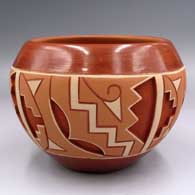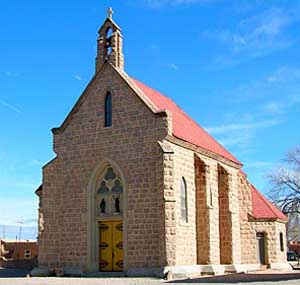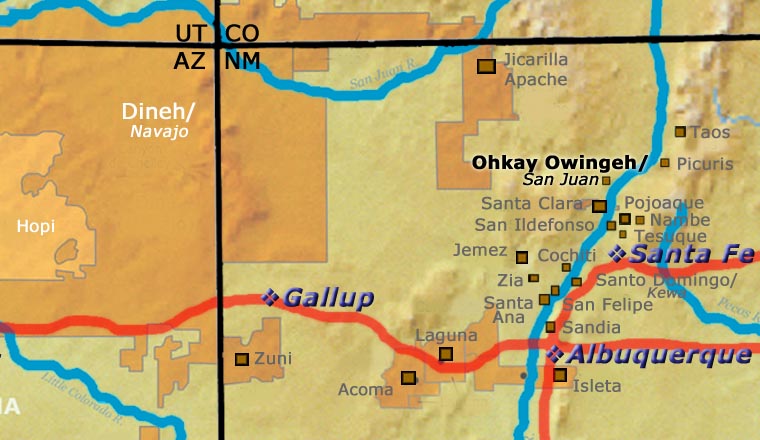
Rosita de Herrera
Ohkay Owingeh
San Juan


Rosita de Herrera was born into Ohkay Owingeh in 1940. Her mother was Tomasita Reyes Montoya. Tomasita was one of the seven Ohkay Owingeh women who redefined San Juan pottery in the 1930s. Some ancient Tewa pottery had been found on Ohkay Owingeh land on the west side of the Rio Grande and it was dated by archaeologists to have been made just prior to the arrival of the Spanish in New Mexico. They based their definition on that pottery and it became known as Potsuwi'i Incised.
They settled on decorating redware pots with a matte design band that featured the old incised designs, similar to a lot of ancient rock art found across the Southwest. Rosita and her sister, Dominguita Sisneros, grew up learning to make that style of pottery from their mother. Eventually, a second version was innovated, adding deep carved geometric designs with other colors, while keeping the polished deep red bands around the base and rim.
Rosita was active in the marketplace by the early 1970s. She mostly made incised and carved polychrome buff-on-red bowls in both Potsuwi'i styles, and some incised blackware bowls in a more recent Ohkay Owingeh style. She taught her son, Norman de Herrera, how to make pottery, too.
100 West San Francisco Street, Santa Fe, New Mexico 87501
(505) 986-1234 - www.andreafisherpottery.com - All Rights Reserved

Ohkay Owingeh / San Juan Pueblo

San Juan Pueblo Mission
In 2005 San Juan Pueblo officially changed its name back to the original name (before the Spanish arrived): Ohkay Owingeh (meaning: Place of the strong people). The pueblo was founded around 1200 AD during the time of the great Southwest drought and migrations. The people speak Tewa and may have come to the Rio Grande area from southwestern Colorado or from the San Luis Valley in central Colorado.
Spanish conquistador Don Juan de Oñate took control of the pueblo in 1598, renaming it San Juan de los Caballeros (after his patron saint, John the Baptist). He established the first Spanish capitol of Nuevo Mexico across the Rio Grande in an area he named San Gabriel. In 1608, the capitol was moved south to an uninhabited area that became the Santa Fe we know today.
After 80 years of progressively deteriorating living conditions under the Spanish, the tribe participated in the Pueblo Revolt of 1680 (one of the revolt's ringleaders, Popé, was a San Juan native) and helped to expel the Spanish from Nuevo Mexico for 12 years. However, when the Spanish returned in 1692 that tribal unity had fallen apart and the individual pueblos were relatively easy for the Spanish to reconquer.
Today, Ohkay Owingeh is the largest Tewa-speaking pueblo (in population and land) but few of the younger generations are interested in carrying on with many of the tribe's traditional arts and crafts (such as the making of pottery). The pueblo is home to the Eight Northern Indian Pueblos Council, the Oke-Oweenge Arts Cooperative, the San Juan Lakes Recreation Area and the Ohkay Casino & Resort. The tribe's Tsay Corporation is one of northern New Mexico's largest private employers.
100 West San Francisco Street, Santa Fe, New Mexico 87501
(505) 986-1234 - www.andreafisherpottery.com - All Rights Reserved
